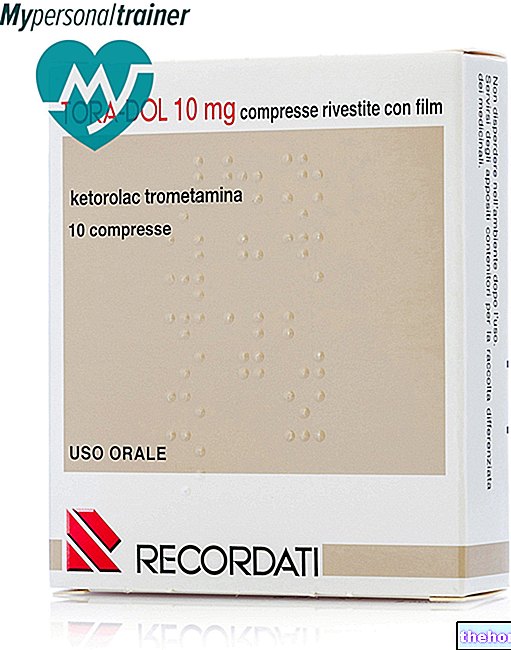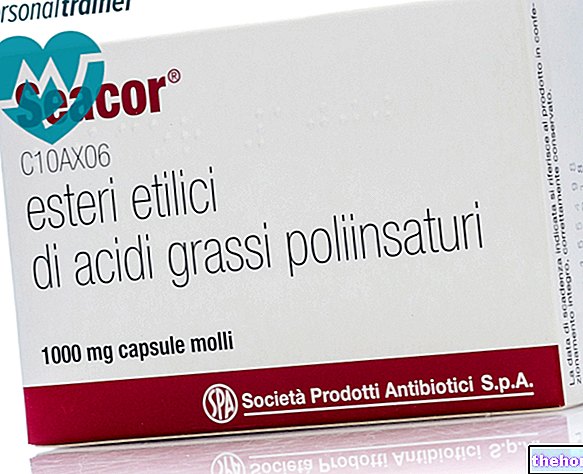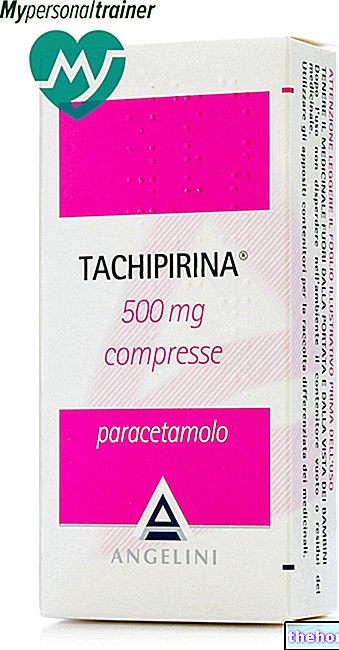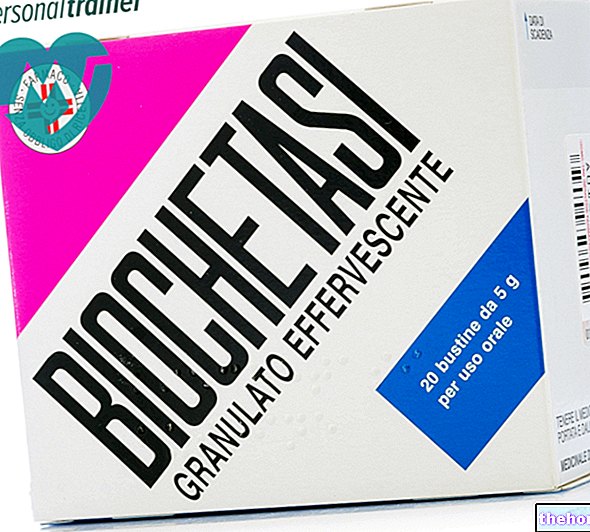Active ingredients: Azelastine (Azelastine hydrochloride)
RINAZINE ANTIALLERGIC 1mg / ml nasal spray, solution
Why is Rinazina antiallergic used? What is it for?
RINAZINE ANTIALLERGICA contains the active substance azelastine hydrochloride, which belongs to a group of medicines called antihistamines.
RINAZINE ANTIALLERGICA is used to treat the short-term symptoms of allergic rhinitis in adults, adolescents and children over the age of six.
Talk to your doctor if you do not feel better or if you feel worse after a short period of treatment.
Contraindications When the antiallergic Rinazina should not be used
DO NOT use RINAZINE ANTIALLERGIC
- if you are allergic to azelastine hydrochloride or any of the other ingredients of this medicine (listed in section 6)
- in children under 6 years of age
- during pregnancy and breastfeeding (see "Pregnancy and breastfeeding").
Precautions for use What you need to know before taking Rinazina antiallergica
If you notice symptoms persist or worsen during treatment, please contact your doctor.
Children
RINAZINA ANTIALLERGICA should not be administered to children under 6 years of age.
Interactions Which drugs or foods can modify the anti-allergic effect of Rinazina
Tell your doctor or pharmacist if you are taking, have recently taken or might take any other medicines, even those obtained without a prescription.
No interactions have been observed with other medicinal products frequently used concurrently.
Warnings It is important to know that:
Pregnancy and breastfeeding
If you are pregnant, think you may be pregnant or are planning to become pregnant, or if you are breast-feeding, ask your doctor or pharmacist for advice before using any medicine.
Do not use RINAZINA ANTIALLERGICA during pregnancy and / or breastfeeding. Use should also be avoided if you suspect a state of pregnancy or wish to plan a maternity leave.
Driving and using machines
No particular negative effects on vigilance are to be expected with the use of this medicinal product.
RINAZINA ANTIALLERGICA contains benzalkonium chloride
Benzalkonium chloride (BAC) contained as a preservative in RINAZINA ANTIALLERGICA, especially when used for long periods, can cause swelling of the nasal mucosa. If such a reaction (persistent nasal congestion) is suspected, a BAC-free nasal medicine should be used if possible. If such medicines for nasal use without BAC are not available, another pharmaceutical form should be considered. May cause bronchospasm. Bronchospasm is a narrowing of the bronchial tubes due to the contraction of smooth bronchial muscles.
This narrowing of the bronchi causes respiratory distress, due to a reduced passage of air. There may be skins and wheezing and sometimes even a dry and persistent cough.
Dose, Method and Time of Administration How to use antiallergic Rinazina: Posology
Always use RINAZINE ANTIALLERGICA always exactly as described in this leaflet or as directed by your doctor or pharmacist.
If in doubt, consult your doctor or pharmacist.
Adults and children from 6 years of age onwards
The recommended dose is: one spray (0.14 mg) dosed in each nostril 1 or 2 times a day, equal to 0.28 - 0.56 mg of azelastine hydrochloride per day.
The 5ml bottle ensures the total delivery of 36 sprays. The 10ml bottle ensures the total delivery of 72 sprays.
During application, the head must be kept in an upright position (follow the instructions as shown in the figure below)
- Remove the cap
- Only when using it for the first time, squeeze hard several times not when the head in the spray appears
- Spray a protective nostril puff while maintaining an upright position
- Put the protective cap back on
Attention:
- do not exceed the indicated doses without the advice of your doctor;
- use this medicine only for short periods of treatment;
- consult your doctor if the disorder occurs repeatedly or if you notice any recent changes in its characteristics.
Overdose What to do if you have taken an overdose of the anti-allergic Rinazine
If you use more RINAZINE ANTIALLERGIC than you should
No cases of overdose intoxication have been reported so far. According to experimental studies, toxic doses can lead to central nervous system symptoms (malaise, excitement, convulsions, sedation); in these cases symptomatic treatment should be implemented. There is no known specific antidote for azelastine.
In case of accidental ingestion / intake of an excessive dose of RINAZINE ANTIALLERGICA, notify your doctor immediately or go to the nearest hospital.
If you forget to use RINAZINE ANTIALLERGIC
Do not use a double dose to make up for a forgotten dose, but continue the treatment as indicated in this leaflet.
If you have any further questions on the use of RINAZINE ANTIALLERGICA, ask your doctor or pharmacist.
Side Effects What are the side effects of anti-allergic Rinazine
Like all medicines, RINAZINE ANTIALLERGICA can cause side effects, although not everybody gets them.
A sensation of bitter taste has been described, typical of the drug itself, which can occur mainly due to an incorrect position of the head, thrown backwards, during administration.
In rare cases, irritation of the nasal mucosa with possible modest bleeding has been observed. These unwanted e ects are generally transient. However, when they occur, it is advisable to consult your doctor or pharmacist.
Compliance with the instructions contained in the package leaflet reduces the risk of undesirable effects.
Reporting of side effects
If you get any side effects, talk to your doctor or pharmacist. This includes any possible side effects not listed in this leaflet. You can also report side effects directly via the national reporting system at https://www.aifa.gov.it/content/segnalazioni-reazioni-avverse. By reporting unwanted effects you can help provide more information on the safety of this medicine.
Expiry and Retention
Keep this medicine out of the sight and reach of children.
Do not use this medicine after the expiry date which is stated on the carton and bottle. The expiry date refers to the last day of that month.
The expiry date refers to the product in intact packaging, correctly stored.
Do not use the medicine 6 months after first opening the aconcino.
Do not store the medicine above 25 ° C.
Store the bottle upright. Don't turn it upside down.
Do not use this medicine if you notice that the lid of the bottle is not intact.
It is important that you always have the information about the medicine available, so keep both the box and this leaflet.
Do not throw any medicines via wastewater or household waste. Ask your pharmacist how to dispose of medicines you no longer use. This will help protect the environment.
Composition and pharmaceutical form
What RINAZINE ANTIALLERGIC contains
Bottle of 5 ml of solution.
The active ingredient is: azelastine hydrochloride 5 mg.
Each ml of solution contains 1 mg of azelastine hydrochloride.
The other ingredients are: hypromellose, disodium edetate, benzalkonium chloride solution, anhydrous citric acid, disodium phosphate dodecahydrate, sodium chloride, purified water.
Bottle of 10 ml of solution.
The active ingredient is: azelastine hydrochloride 10 mg.
Each ml of solution contains 1 mg of azelastine hydrochloride.
The other ingredients are: hypromellose, disodium edetate, benzalkonium chloride solution, anhydrous citric acid, disodium phosphate dodecahydrate, sodium chloride, purified water.
Description of the appearance of RINAZINA ANTIALLERGICA and contents of the pack
RINAZINA ANTIALLERGICA nasal spray comes in the form of a solution.
The contents of the package are one bottle with nebulizer of 5 ml of solution or one bottle with nebulizer of 10 ml of solution.
Not all pack sizes may be marketed.
Source Package Leaflet: AIFA (Italian Medicines Agency). Content published in January 2016. The information present may not be up-to-date.
To have access to the most up-to-date version, it is advisable to access the AIFA (Italian Medicines Agency) website. Disclaimer and useful information.
01.0 NAME OF THE MEDICINAL PRODUCT
RINAZINA ANTIALLERGICA 1 MG / ML NASAL SPRAY, SOLUTION
02.0 QUALITATIVE AND QUANTITATIVE COMPOSITION
1 bottle contains:
Active ingredient: Azelastine hydrochloride 1 mg / mL
Excipients with known effects: benzalkonium chloride
For the full list of excipients, see section 6.1
03.0 PHARMACEUTICAL FORM
Nasal spray, solution.
04.0 CLINICAL INFORMATION
04.1 Therapeutic indications
Short-term symptomatic treatment of allergic rhinitis.
04.2 Posology and method of administration
One spray (0.14 mg) dosed in each nostril 1 or 2 times a day, equal to 0.28 - 0.56 mg of azelastine hydrochloride per day.
The 5 ml bottle ensures the total delivery of 36 sprays.
The 10 ml bottle ensures a total delivery of 72 sprays.
During application, the head must be kept in an upright position.
04.3 Contraindications
Hypersensitivity to the active substance or to any of the excipients listed in section 6.1.
Children under six years of age.
Pregnant and lactating women (see section 4.6)
04.4 Special warnings and appropriate precautions for use
Do not use the medicine 6 months after first opening the vial.
Benzalkonium chloride (BAC) contained as a preservative in RINAZINA ANTIALLERGICA, especially when used for long periods, can cause swelling of the nasal mucosa. If such a reaction (persistent nasal congestion) is suspected, a BAC-free nasal medicine should be used if possible. If such nasal medications without BAC are not available, another pharmaceutical form should be considered. May cause bronchospasm.
04.5 Interactions with other medicinal products and other forms of interaction
No interactions were observed with other drugs frequently used concurrently.
04.6 Pregnancy and lactation
RINAZINE ANTIALLERGICA should not be used during pregnancy and lactation (see section 4.3).
04.7 Effects on ability to drive and use machines
No particular negative effects on vigilance are to be expected with the use of RINAZINA ANTIALLERGICA.
04.8 Undesirable effects
A bitter taste sensation, typical of the drug itself, has been described, which can occur mainly due to an incorrect position of the head, turned backwards, during administration. In rare cases, irritation of the nasal mucosa with possible modest bleeding has been observed. .
Reporting of suspected adverse reactions
Reporting of suspected adverse reactions occurring after authorization of the medicinal product is important as it allows continuous monitoring of the benefit / risk balance of the medicinal product. Healthcare professionals are asked to report any suspected adverse reactions via the national reporting system. "address https://www.aifa.gov.it/content/segnalazioni-reazioni-avverse.
04.9 Overdose
No cases of overdose intoxication have been reported so far. According to experimental studies, toxic doses can lead to central nervous system symptoms (malaise, excitement, convulsions, sedation); in these cases symptomatic treatment should be implemented. There is no known specific antidote for azelastine.
05.0 PHARMACOLOGICAL PROPERTIES
05.1 Pharmacodynamic properties
Pharmacotherapeutic group: Decongestants and other nasal preparations for topical use - Antiallergic substances except corticosteroids.
ATC code: R01AC03
Azelastine is the first of a series of chemical compounds belonging to a new class of drugs characterized by a powerful and prolonged antiallergic effect.
Azelastine (chemically: 4 - (p-chlorobenzyl) -2- (hexahydro-1methyl-1H-Azepin 4-yl) -1 (2H) -phthalazinone) in addition to antagonizing the actions of some chemical mediators involved in allergic reactions - such as leukotrienes, histamine and serotonin - on their target sites, has a Ca ++ channel blocking effect and a marked anti-PAF (Platelet Activating Factor) effect.
As a consequence of these pharmacological properties we can expect a decrease in the hyperreactivity of the bronchial system which is associated with inflammation.
Azelastine also exhibits a bronchodilating effect.
Preclinical animal studies have practically no evidence of anti-cholinergic effects.
05.2 Pharmacokinetic properties
After repeated nasal administration of 0.14 mg into each nostril twice daily, the plasma levels of azelastine were approximately 0.26 ng / ml in healthy volunteers and 0.65 ng / ml in patients.
In a bioequivalence study conducted with Rinazine Antiallergica in healthy volunteers, a mean Cmax of 0.06 ng / ml was found after nasal administration of a single 0.28 mg dose of azelastine.
Azelastine is rapidly absorbed after oral administration, showing an absolute bioavailability greater than 80%. Food does not change the kinetic parameters relating to absorption and bioavailability.
The volume of distribution is high, indicating a prevalent distribution in peripheral tissues. In humans, the protein binding is approximately 80-90%. In the animal, Azelastine is distributed in peripheral tissues and the highest concentrations have been found in the liver, lung, adrenals, pancreas, kidney and spleen.
In both animals and humans, azelastine is extensively metabolised. N-desmethyl azelastine is the major pharmacologically active metabolite.
The plasma elimination half-life after a single oral dose is approximately 20 hours for azelastine and approximately 45 hours for N-desmethyl azelastine.
The highest plasma concentrations occur approximately 4 hours after oral administration.
75% of azelastine and its metabolites are eliminated in the faeces; 25% in the urine.
The prolonged excretion of small quantities of the administered dose in the faeces suggests the possible establishment of an enterohepatic circulation.
05.3 Preclinical safety data
Acute toxicity tests were conducted on the dog, guinea pig and mouse. The LD50 values, after oral administration, appeared to be included, depending on the animal species, between 820 and 4460 times the daily dose proposed in man.
After repeated administration for up to 1 year, toxicological studies (conducted in rats, rabbits and dogs) have shown that the first signs referable to toxicity occurred with doses greater than 75 times the dose proposed in human therapy.
No phenomena referable to mutagenic effects of the substance were observed; also from the point of view of the effects on reproduction, in animals at non-toxic doses, no teratogenic properties were observed.
Preclinical data suggest that benzalkonium chloride is capable of producing a toxic effect - concentration and time dependent - on the vibrating cilia of the epithelium of the nasal mucosa, including irreversible immobility and can induce histopathological changes of the nasal mucosa.
06.0 PHARMACEUTICAL INFORMATION
06.1 Excipients
Hypromellose, disodium edetate, benzalkonium chloride solution, anhydrous citric acid, disodium phosphate dodecahydrate, sodium chloride, purified water.
06.2 Incompatibility
None.
06.3 Period of validity
In intact packaging: 3 years.
After first opening: 6 months.
06.4 Special precautions for storage
Do not store above 25 ° C
Store upright. Do not flip.
06.5 Nature of the immediate packaging and contents of the package
Amber glass bottle with nebulizer of 5 ml of solution.
Amber glass bottle with 10 ml nebulizer of solution.
06.6 Instructions for use and handling
No special instructions.
Unused medicine and wastes derived from this medicine must be disposed of in accordance with local regulations
07.0 MARKETING AUTHORIZATION HOLDER
GlaxoSmithKline Consumer Healthcare S.p.A. - Via Zambeletti s.n.c. - 20021 Baranzate (MI)
08.0 MARKETING AUTHORIZATION NUMBER
"1mg / ml nasal spray, solution" bottle with nebulizer 5 ml - AIC 041174018
"1mg / ml nasal spray, solution" bottle with nebulizer 10 ml - AIC 041174020
09.0 DATE OF FIRST AUTHORIZATION OR RENEWAL OF THE AUTHORIZATION
19 October 2012
10.0 DATE OF REVISION OF THE TEXT
AIFA V&A 1127 of 18.06.2014 - Official Journal of 08.07.2014




























